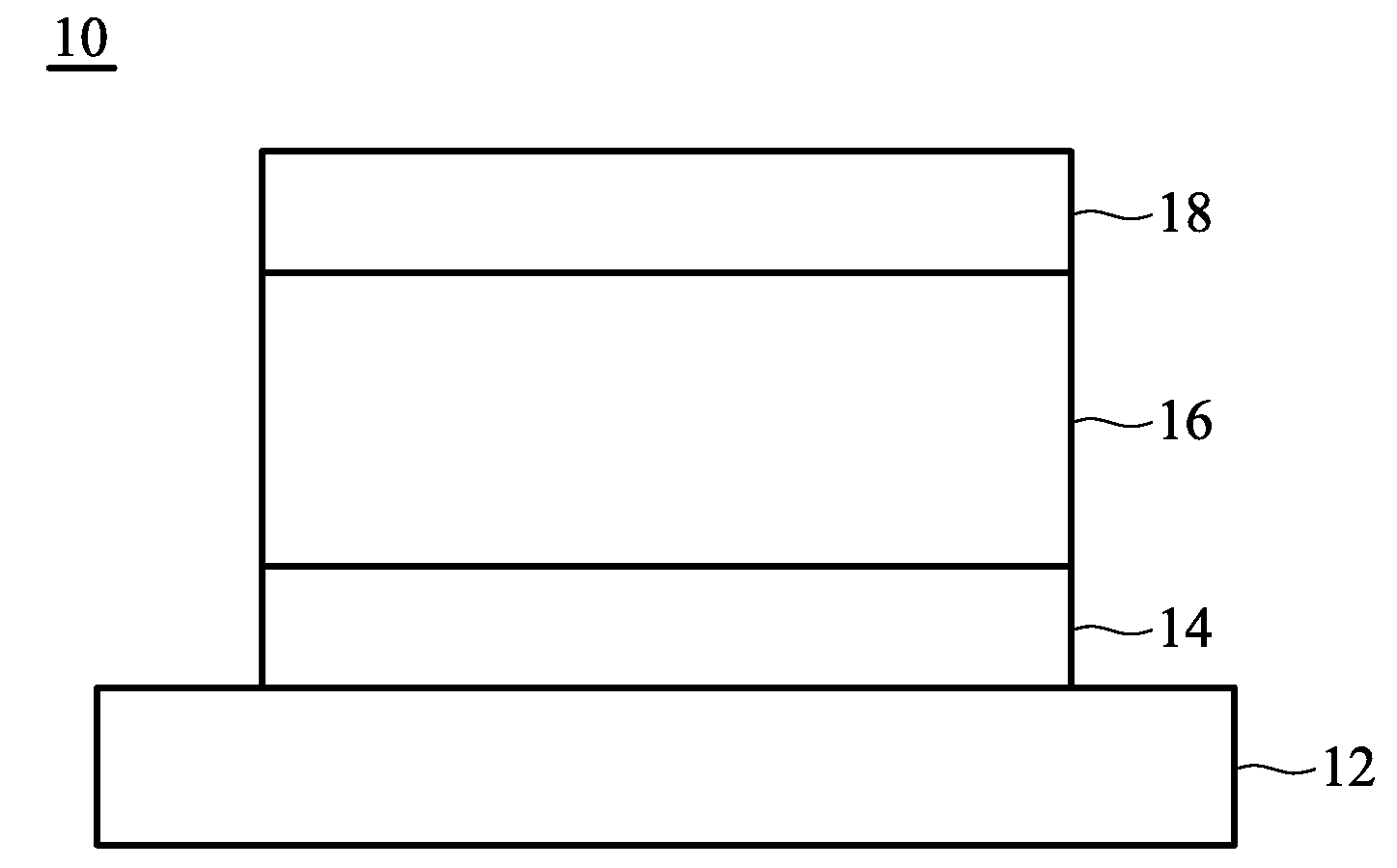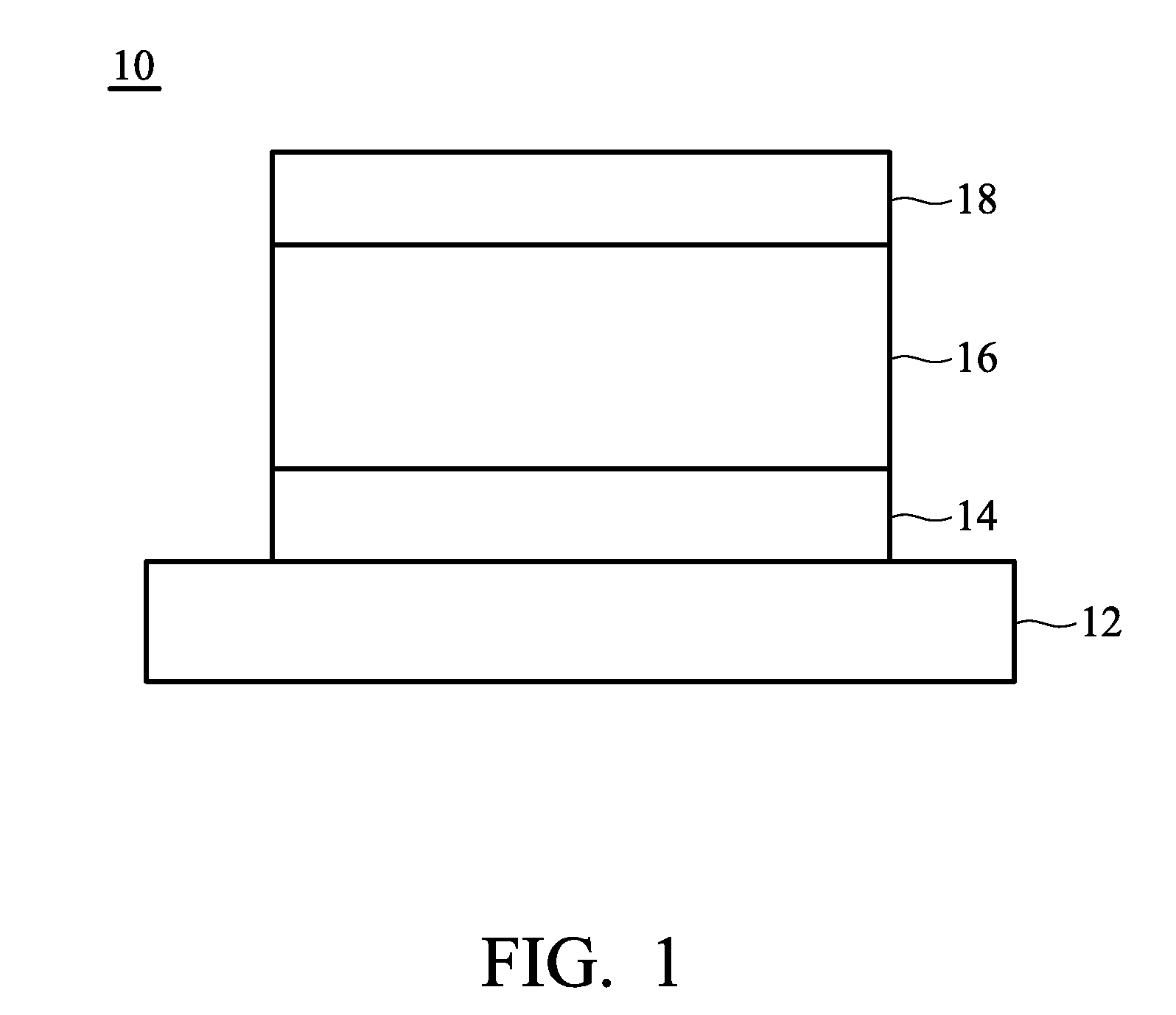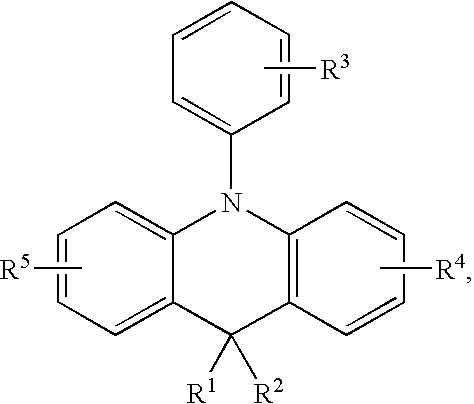Organic compound and organic electroluminescence device employing the same
a technology of organic electroluminescence and compound, which is applied in the direction of discharge tube luminescnet screen, other domestic articles, natural mineral layered products, etc., can solve the problems of inferior thermal stability, low current density of the oled device, and difficulty in chemical structure design
- Summary
- Abstract
- Description
- Claims
- Application Information
AI Technical Summary
Problems solved by technology
Method used
Image
Examples
example 1
[0027]Preparation of Compound TB
[0028]First, diphenylamine (10.0 mmole,1.69 g), 1-bromo-2-iodobenzene (10.0 mmole,2.82 g), and NaOtBu (25.0 mmole,2.40 g) were add into a 100 ml bottle and dissolved into toluene (30 ml). Next, Pd(OAc)2 (0.5 mmole,0.1 g,0.5 ml(1M in toluene)) was injected into the bottle and refluxed. After heating for 24 hrs, the reaction was terminated after being checked by a TLC, and the results were filtrated by a silica gel and a diatomite with Cl2CH2 as the extraction solvent After purification by column chromatography with n-hexane / ethyl acetate (9:1) as the extraction solvent, a compound A was obtained with a yield of 70%.
[0029]The synthesis pathway was as follows:
[0030]Next, a compound A (10.0 mmole,3.24 g) and THF (20 ml) were added into a bottle. After cooling to −78° C., n-BuLi (12.0 mmole,0.77 g,7.5 ml(1.6M in hexane)) was slowly added into the bottle. After stirring for 1 hr, benzophenone (10.0 mmole, 1.82 g) was added into the bottle. After reacting at...
example 3
[0033]Preparation of Compound TBM
[0034]Compound A (10.0 mmole,3.24 g) and THF (20 ml) were added into a bottle. After cooling to −78° C., n-BuLi (12.0 mmole,0.77 g,7.5 ml(1.6M in hexane)) was slowly added into the bottle. After stirring for 1 hr, 4,4′-Dimethoxy benzophenone (10.0 mmole, 2.42 g) was added into the bottle. After reacting at room temperature for 2 hrs, AcOH (30 ml) and HCl (3 ml) were added into the bottle and refluxed for 3 hrs. Next, the results was extracted by Cl2CH2 and dried by MgSO4, and gray powder was obtained via concentration. After reprecipitation with Cl2CH2 and n-hexane, a compound TBM (white powder) was obtained.
[0035]The synthesis pathway was as follows:
[0036]Next, the TG, HOMO and LUMO energy gap, melting point, phosphorescent wavelength (measured at −78° C.), and tEg of compound TBM were measured and are shown in Table 2.
example 7
[0037]Preparation of Compound TBP
[0038]Compound A (10.0 mmole, 3.24 g) and THF (20 ml) were added into a bottle. After cooling to −78° C., n-BuLi (12.0 mmole, 0.77 g, 7.5 ml(1.6M in hexane)) was slowly added into the bottle. After stirring for 1 hr, 4,4′-diphenyl benzophenone (10.0 mmole, 3.34 g) was added into the bottle. After reacting at room temperature for 2 hrs, AcOH (30 ml) and HCl (3 ml) were added into the bottle and refluxed for 3 hrs. Next, the results were extracted by Cl2CH2 and dried by MgSO4, and gray powder was obtained via concentration. After reprecipitation with Cl2CH2 and n-hexane, a compound TBP (white powder) was obtained.
[0039]The synthesis pathway was as follows:
[0040]Next, the TG, HOMO and LUMO energy gap, melting point, phosphorescent wavelength (measured at −78° C.), and tEg of compound TBP were measured and are shown in Table 2.
PUM
| Property | Measurement | Unit |
|---|---|---|
| melting point | aaaaa | aaaaa |
| thickness | aaaaa | aaaaa |
| thickness | aaaaa | aaaaa |
Abstract
Description
Claims
Application Information
 Login to View More
Login to View More - R&D
- Intellectual Property
- Life Sciences
- Materials
- Tech Scout
- Unparalleled Data Quality
- Higher Quality Content
- 60% Fewer Hallucinations
Browse by: Latest US Patents, China's latest patents, Technical Efficacy Thesaurus, Application Domain, Technology Topic, Popular Technical Reports.
© 2025 PatSnap. All rights reserved.Legal|Privacy policy|Modern Slavery Act Transparency Statement|Sitemap|About US| Contact US: help@patsnap.com



